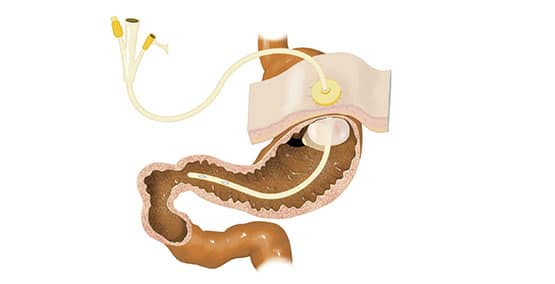
Tube-feedings for kids who aspirate – When kids with swallowing problems need a tube for feedings
G-tubes may be needed for liquids or entire meals
-Aspiration is when food or fluids go into the trachea, the tube carrying oxygen to the lungs. Pneumonia can develop if the foods get as far as the lungs, especially for children who have weak chest muscles and can't cough. It may not occur with all foods, but typically fluids like juices or milk cause the worst problems. As a result, many of these children have their drinks thickened or they have feeding tubes (known as gastrostomy or g-tubes) placed directly into their stomachs, bypassing the swallowing mechanism and the possibility of aspiration.
A study (ME McSweeney. Journ Pediatrics 2016; pages 79-84) evaluated 114 children who had aspiration.
- They found no difference in the number of hospitalizations comparing the kids who drank thin or thick liquids.
- Those fed by g-tubes were hospitalized twice as often and for a longer time (24 days compared with 2 days for those fed by mouth)
But those who need a feeding tube often have other problems as well. In the study, 11 children needed a g-tube because they failed oral feedings even when the fluids were thickening.

Bottom line
Swallowing can improve over time (but it often takes a long time). Some children who have problems with thin fluids may do well drinking thickened liquids. They may be able to avoid having a g-tube for feedings. However, children who have problems swallowing thickened liquids generally need to receive their fluids, and maybe their entire diet through a g-tube.




